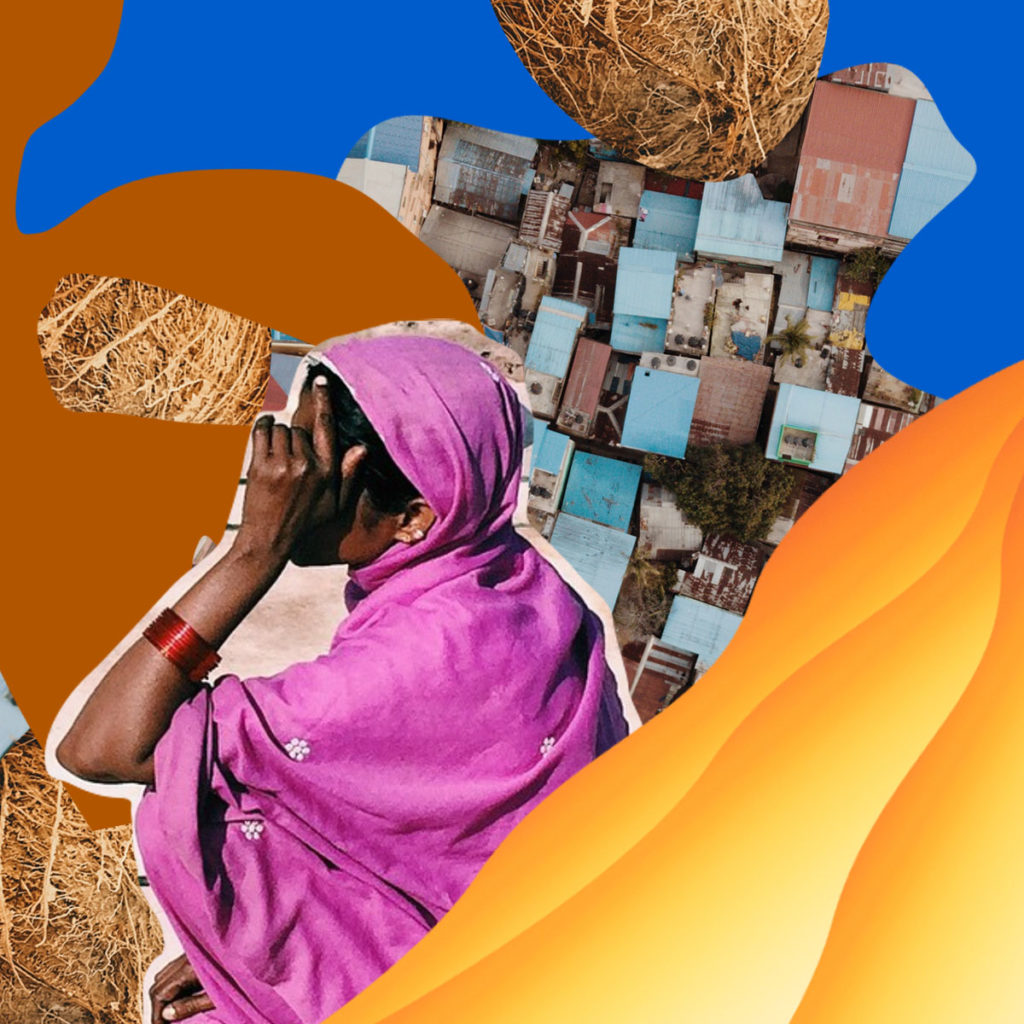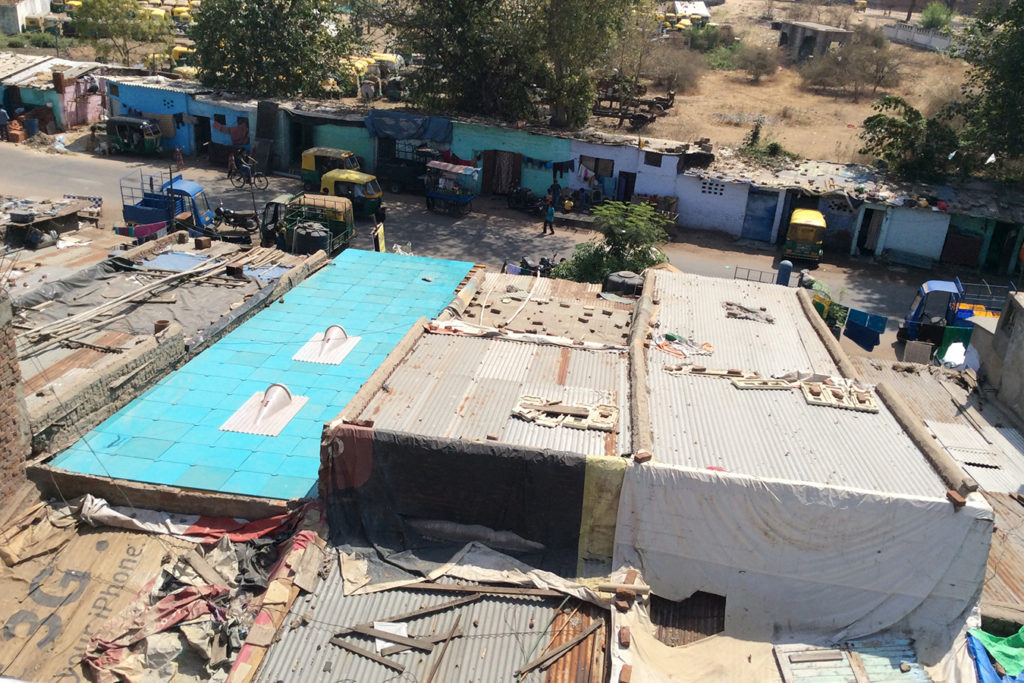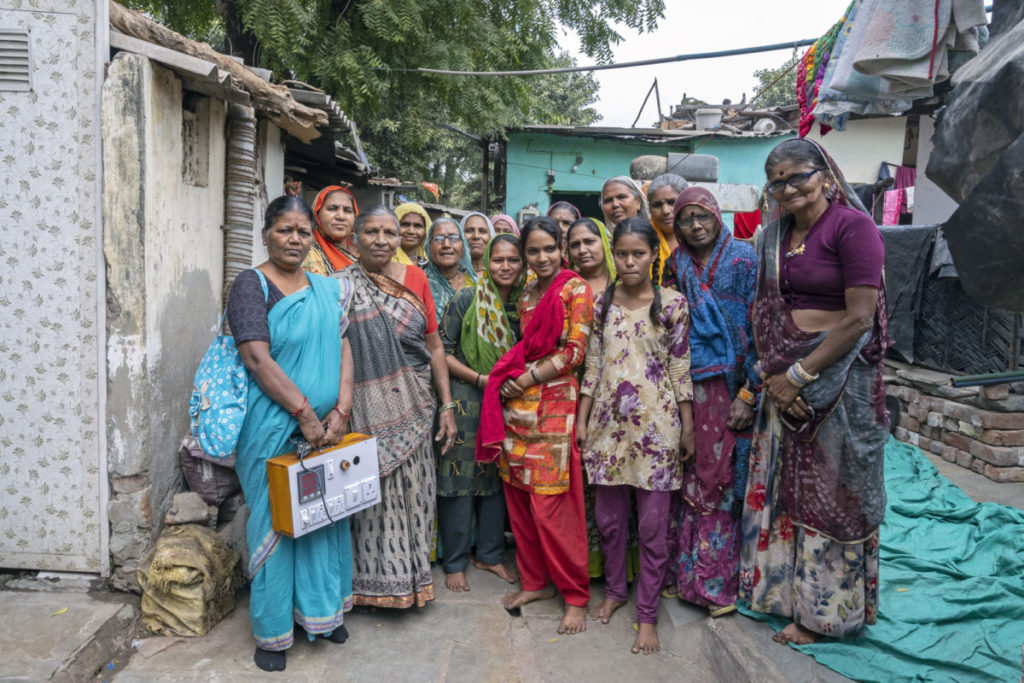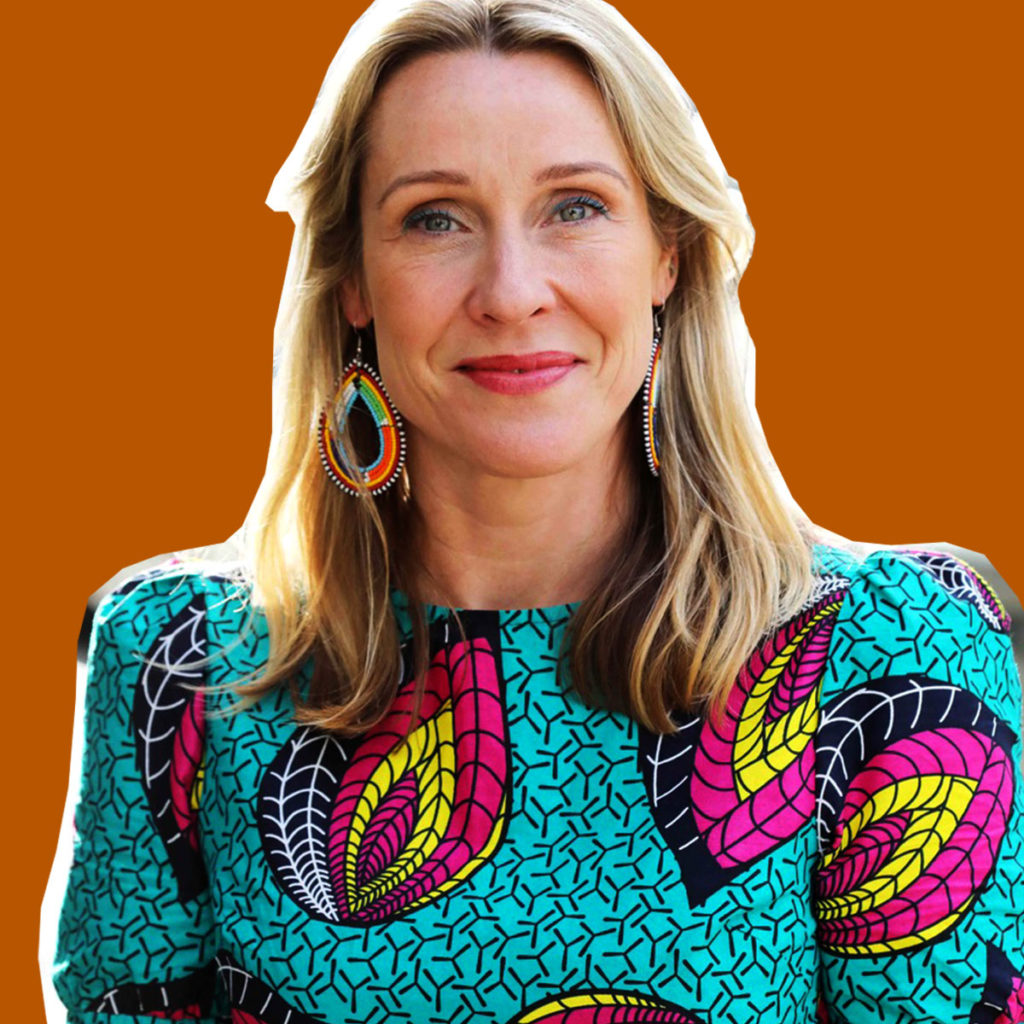
Enough Heat
For Meenaben Soni, summer was always a season of constant worry. Her tin-roofed home in Ahmedabad, India got unbearably hot. As a mother of two, a tailor, and a community worker, a large chunk of her work was indoors, under tin roofs. She wasn’t the only one who suffered: the heat would cause her husband’s asthma to flare up, leaving him unwell. Her children, in the oppressive heat, found it difficult to focus on their studies. When it rained, the roof leaked, causing their home to flood and increasing the risk of contracting malaria, which was becoming pervasive in the neighborhood.
The heat, however, is only getting worse: 2019 was one of the warmest years on record, and India suffered one of its longest heat waves in recent history with temperatures rising above 50 Celsius (122 Farenheit) in some parts.
A recent study estimates that by the year 2100, extreme heat could kill more people than all infectious diseases combined.
Last year, in the midst of the pandemic, parts of India, including the national capital, faced a heatwave again and what meteorologists described as an “unusual” weather pattern, with excess rainfall; several cities and towns were flooded. For residents of urban slums in India who live in poorly ventilated houses, usually with tin roofs, there is little respite from these harsh conditions. Built in densely-populated areas with no green spaces, these neighborhoods remain unsheltered from heat even at night. About 68 million Indians live in slums, and are most likely to be left out of city planning and policy making.
Soni and her family are part of this 68 million. But in 2016, Soni discovered that coconuts (yes! coconuts) could save her from the brutality of India’s summer. Modroof, a specially designed cooling roof made with coconut husk and paper waste by an Ahmedabad-based firm, had devised modular roof panels that were sturdy, water-proof, and easy to install. If her family were to move tomorrow, they could dismantle them and carry them along. Soni was sold on the idea immediately. Her husband was discouraged by the cost — at the rate of 250 Indian rupees or about 3.50 USD per square foot, and an additional cost for transport, it would cost them about 72,000 Indian rupees, or 970 USD. However, they were able to take a loan and pay small sums over two years.

Modroof in the slums
Soni immediately noticed that the temperature inside the house was lower by 5 to 7 degrees after the Modroof was installed. “It used to always bother me that I couldn’t afford to build myself a concrete cement house like some of my neighbours,” Soni says. “But I feel good now…my house looks appealing and stays cool too. I feel like I am on par with others.”
She’s taken her enthusiasm for roofs—and, in general, better living conditions—to the community, becoming a grassroots leader with the Mahila Housing Trust, an Ahmedabad-based non-profit that works with women from underserved communities to resolve housing-related issues. In 2015, after providing energy audits to households for over two decades, the Trust received financial support of about 1.2 million USD from the Global Resilience Partnership allowing it to expand its work in making communities resilient to climate change. This meant equipping them with housing solutions that can help them deal with and adapt to climate shocks and stressors, like heat. The Modroof is one such solution.
“Climate change is here and here to stay. We have to work on mitigation but along with it, we also need to understand that people should start adapting so they can become more and more resilient,” Bijal Brahmbhatt, Director at MHT, says. Experts interviewed for this piece agreed that shocks and disasters, which are more visible and easily explainable in nature, are taken more seriously at all levels and there is a lot of work being done around them. Heat stress is more abstract in nature and its impact is less understood.
According to Lubaina Rangwala, managing associate at World Resource Institute India’s sustainable cities center, lack of mainstream information and general awareness about the impact of increasing temperatures affects how communities are coping. “Heat is seen as a nuisance rather than a risk. When the nuisance level is higher, you come up with certain personal comfort measures to deal with it. But it is not seen as a life-risk. Therefore there isn’t a coming together; an action-oriented conversation around it,” Rangwala says.

Grassroot leader Krishnaben at work
WOMEN TAKE THE BRUNT OF IT
Women seem to be dealing with the brunt of these rising temps. In its report in 2019, the International Labor Organization projected a productivity loss equivalent to 80 million full time jobs in 2030 owing to heat stress, adding that millions of women who constitute the majority of subsistence agriculture workers will be highly affected. But there’s also the heat stress that women face from having to be indoors. This is especially acute in India, where a high percentage of women engage in informal work of producing goods or services for the market from within or around their homes. Indian women also bear a disproportionately high burden when it comes to unpaid domestic work, and many of them are forced to be at home due to societal restrictions in their mobility.
“I see women in my community, my neighborhood where women do not usually step out of the house…the in-laws might sit outside all day and enjoy some air, but the daughter-in-laws remain indoors. I see them suffer a lot due to heat,” says Dipika Malek, a grassroots leader with MHT.
This is why MHT works with women to create awareness at the community level and introduce cost-effective solutions for the issue.
These women have gone from being curious about the erratic weather patterns they have been experiencing to adding climate change to their daily vocabulary.

Grassroot leader Krishnaben with women in the neighborhood slums
The participatory model of MHT engages women directly in community activities like planting of trees, ensuring hygiene in households and public spaces to ward off mosquito breeding, and implementing a flood-warning system. They also regularly interact with local government authorities and technical experts. This kind of engagement establishes a continued and long-term system to adapt to climate change.
MHT first piloted the Modroof in 2013. The feedback they received was regarding corrugation or folds on the roof tiles: women preferred a flat roof so it could double up as a terrace for their family to use or as a base to construct another floor of rooms above. The design change was crucial and since then, MHT has installed over 400 Modroofs across the country and it continues to be the most demanded solution.
For many like Malek, however, it remains an expensive investment. Instead, she used a solar-reflective white paint on her tin roofs and noticed a similar lowering of about five to seven degrees in indoor temperature.
Since slum households usually share walls and do not have the space for windows, eliminating natural light and air circulation, MHT provides the option of installing ceiling ventilators made with fiber sheets. These ready-made sheets come with dome-shaped cut-outs to allow filtered light, which reduces the need to use bulbs in the day, while making the space cooler.
Ahmedabad was the first South Asian city to launch a heat action plan in 2013 after the city experienced a heatwave which led to an estimated 1,344 deaths. Today, about 100 Indian cities have partnered with the National Disaster Management Authority to develop similar heat adaptive plans for extreme heat events.
The updated Ahmedabad plan, taking into consideration what the MHT’s community women leaders have suggested, also includes a city-wide cool roof programme as a long-term strategy for low-income households.
This is why, for women like Soni and Malek who have been able to step out and create a change in their homes and communities, the work continues.
“Earlier, we were constantly reminded of our poverty and the lack of support for us,” Soni says. “But now no matter what the stressor, we can confidently understand and solve it.”




